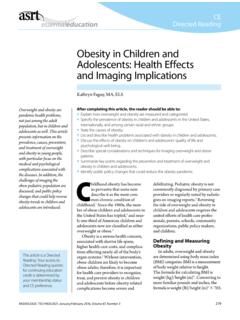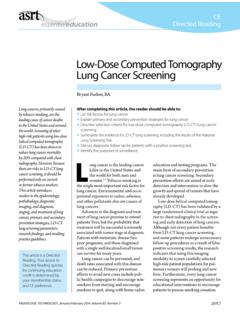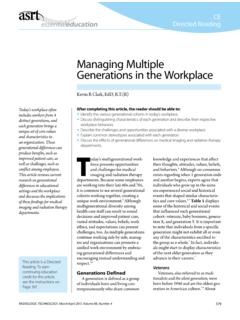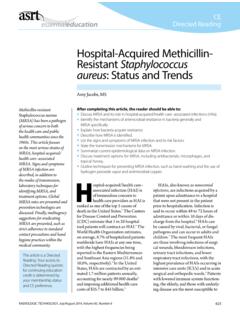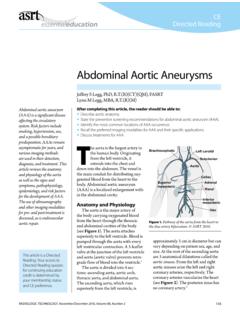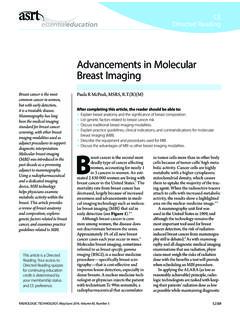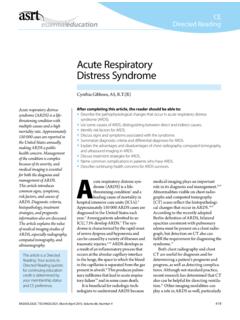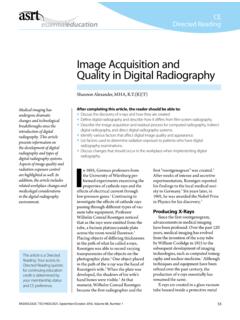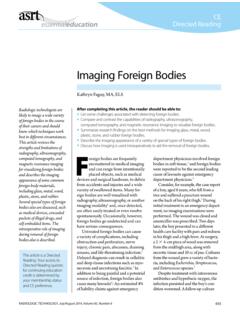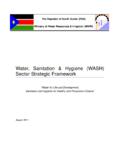Transcription of Crohn Disease: Pathophysiology, Diagnosis, and …
1 297 RADIOLOGIC TECHNOLOGY, January/February 2014, Volume 85, Number 3 CEDirected ReadingTo understand fully how Crohn disease develops and progresses, it is essential to recognize that the gastrointestinal (GI) tract of a healthy individual is in a state of dynamic immune homeostasis, or per-sistent naturally occurring inf lamma-tion. The immune system is responsible for balancing factors that activate its defense system and induce inf lammation while simultaneously down-regulating the inf lammation to maintain mucosal integrity. Because the mucosal surfaces that line the gut are the physical interfaces of the body s immune system with the outside world and the GI tract consists of a large portion of the body s mucosal lymphoid tissue, it is crucial that muco-sal integrity be maintained.
2 An addition-al consideration is the fact that the human intestine harbors the largest and most diverse collection of microbial f lora within the body, consisting of more than 500 species of commensal These commensals, or microorganisms that share a symbiotic benefit with the intestinal environment of their host, actively moderate the expression of genes involved in several functions of the GI tract, including nutrient absorption, mucosal barrier fortification, xenobiotic (foreign chemical compound) metabo-lism, angiogenesis, and postnatal intesti-nal maturation. To maintain this rela-tionship between the intestinal mucosa and its natural f lora, immune homeosta-sis depends on 3 key mucosal functions: maintenance of the epithelial barrier, antigen recognition and immune regula-tion, and lymphoid cell W hen these mucosal functions are impaired, Crohn disease can disease, often seen in the literature as Crohn s disease, is a pro-gressive, systemic autoimmune disorder marked by abnormal inf lammation of the GI tract.
3 Any part of the GI tract can be affected, from the mouth to the After completing this article, the reader should be able to: Describe the pathogenesis of Crohn disease. List predisposing factors for Crohn disease. Summarize the signs, symptoms, and comorbidities associated with the disease. Discuss the diagnosis of Crohn disease, including the patient history, physical examination, laboratory tests, medical imaging, and endoscopic procedures. Explain treatment options for Crohn disease and their Mazal, MS, , (R)(MR) Crohn Disease: Pathophysiology, Diagnosis, and TreatmentThis article is a Directed Reading. Your access to Directed Reading quizzes for continuing education credit is determined by your membership status and CE preference.
4 Crohn disease (often seen in the literature as Crohn s disease ), an autoimmune disease with debilitating gastrointestinal and extragastrointestinal manifestations, is on the rise in the United States and Europe. This article discusses the disease process, clinical presentation, diagnostic tools, and treatment options for Crohn disease. Statistics regarding disease prevalence and epidemiology also are symbol indicates that there is more content in the online version of this Reading298 RADIOLOGIC TECHNOLOGY, January/February 2014, Volume 85, Number 3 Crohn Disease: Pathophysiology, Diagnosis, and Treatmentanus. Diarrhea and abdominal pain are common symp-toms, and the disease can be chronic, intermittent, or in long-term remission.
5 Several subtypes are recognized, depending on the area of the GI tract most affected. Crohn disease is grouped with other inf lammatory bowel diseases (IBDs) such as ulcerative is now widely accepted that IBD results from an inappropriate response of a defective mucosal immune system to the indigenous f lora and other luminal antigens. Experimental evidence suggests that impairment of a variety of immune pathways might result in the initia-tion of potentially destructive inf lammatory cascades. Compelling evidence that supports this hypothesis comes from the use of animal models of IBD, in which genes for varying inf lammatory cells and receptors were individu-ally deleted, with all cases resulting in the development of inf lammation of the intestinal tract similar to One potential area of mucosal malfunction relates to the epithelial wall s role as a barrier.
6 The wall of the intes-tinal lumen consists of 5 layers: epithelial-lined mucosal layer, submucosal layer, 2 muscular layers (inner circular and outer longitudinal), and the outer serosal layer (see Figure 1). In patients with Crohn disease, the epithelial layer often increases in permeability, allowing pathogens to leak through to the mucosal layers beneath with less resistance. This defect often precedes the clinical onset of Crohn disease in individuals with a familial risk. In fact, this leaky bowel impairment has even been found in healthy first-degree relatives of patients with IBD, impli-cating its origin as a genetic As a result of micro-bial pathogens increased access to the mucosal layer and the submucosa s numerous embedded antigen receptors, an immune response may be triggered and the inf lamma-tory cascade mucosa s role in antigen recognition, a second potential reason for immune malfunction, is a variation in the distribution of its toll-like pattern recognition r e c e p t o r s (T L R s).
7 3 TLRs can be found throughout the luminal epithelium, and they vary in both concentra-tion and type. TLRs are individually specialized recep-tors. Each TLR recognizes specific commensal micro-organisms. W hen working in unison, they recognize the majority of intestinal microbes that make up the gut s natural bacterial f lora. Typically, the cells of a healthy patient will express TLR-3 and TLR-5 primarily, with subsequent down-regulation of the immune response due to constant receptor activation by recognized and expected commensal bacteria. However, in patients with Crohn disease, fewer TLR-3 and TLR-5 receptors are present. This results in hypersensitivity to com-mensal exposure, inducing an unsuppressed, aggressive inf lammatory response.
8 A third potential complication is the mucosa s inabil-ity to suppress an inappropriately triggered immune T-cells, members of a group of white blood cells (W BCs) known as lymphocytes, play a central role in cell-mediated immunity. W hen immune cells are not properly controlled and cleared from the body, they per-sist and remain activated rather than undergoing apop-tosis (programmed cell death). These potential mal-functions of the intestinal mucosa and the subsequent impairment of the normal immune response are closely linked to 2 primary risk factors: genetic predisposition and exposure to various environmental antigens. Genetic PredispositionGenetic predisposition especially familial aggrega-tion seems to be the strongest independent indica-tor of which individuals will develop Crohn disease.
9 2013 ASRT. All rights muscleCircular muscleSubmucosaMucosaFigure 1. Intestinal wall Reading 299 RADIOLOGIC TECHNOLOGY, January/February 2014, Volume 85, Number 3 MazalCurrent research shows that among those with Crohn disease, to have a first-degree relative who also has the disease. Furthermore, for a first-degree relative of a patient with Crohn disease, the estimated lifetime risk of developing Crohn disease ranges from to ,3 making first-degree relatives 3 to 20 times more likely to develop the disease than those without the familial Furthermore, the risk for a sibling of a patient with Crohn disease is even higher than the aver-age risk for a first-degree ethnicity, similar data have shown that for an individual of European Jewish (Ashkenazi)
10 Descent, the estimated lifetime risk for those with a first-degree relative who has Crohn disease increases to ,3 making them 3 to 5 times more likely to develop the disease than non Ashkenazi Jews who also have a first-degree relative with Crohn In fact, Crohn disease is more preva-lent in Ashkenazi Jews than in any other ethnic Crohn disease has been characterized as a polygenic disease process. Genome-wide scans show susceptibility loci for Crohn disease on multiple chromosomes that play a potential role in development of the Regions on chromosomes 16q, 12, 6, 14, 5, 19, 1, 16p, and 10 have been renamed IBD1 to IBD9, respec-tively, indicating their involvement in the IBD process. Mutations to several of these loci have been found to affect an individual s systemic immune response direct-ly.
